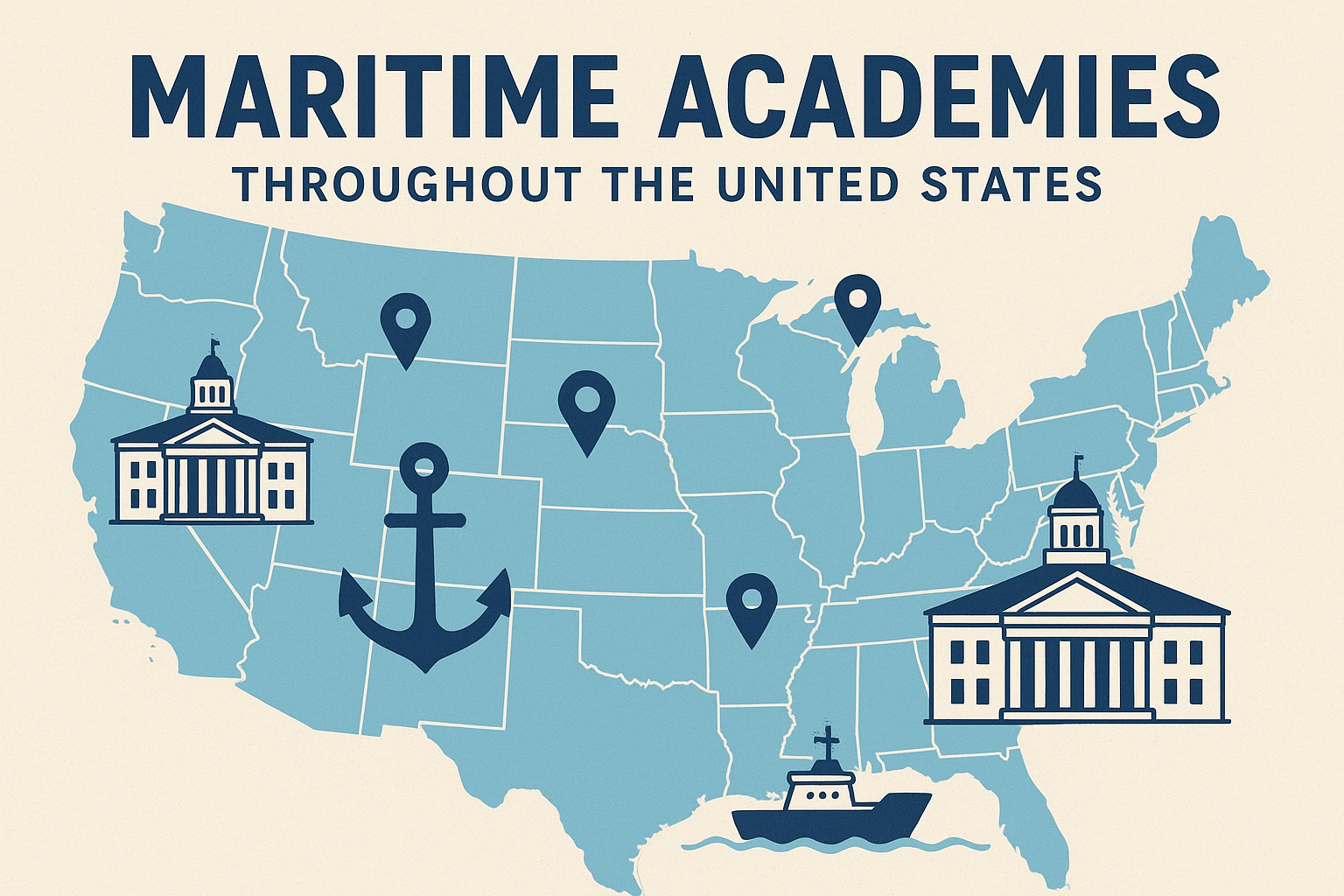
Maritime Academies in the United States: Preparing to Sail the World's Oceans
Introduction
An Overview of U.S. Maritime Academies
- California Maritime Academy (Cal Maritime) - Located in Vallejo, California.
- Maine Maritime Academy - In Castine, Maine.
- Massachusetts Maritime Academy - In Buzzards Bay, Massachusetts.
- State University of New York Maritime College - Often referred to as New York Maritime Academy, in Throggs Neck, New York.
- Texas A&M Maritime Academy - At the Galveston campus in Texas.
- United States Merchant Marine Academy (USMMA) - At Kings Point, a federal service academy in New York.
- Great Lakes Maritime Academy - Part of the Michigan schools, focused on the unique challenges of the Great Lakes region.
Academic Programs: Degrees That Go Beyond the Horizon
Licensing, Job Placement, and Career Success
Pathways to the Armed Forces: Serving Nation and Sea
The Rigors of Training: Life as a Cadet
Wrapping Up: Charting Your Course Forward
- Explore further - Visit the MARAD website for detailed program information and application guides.
- Connect with academies - Attend virtual open houses or contact admissions offices to learn more.
- Dive deeper - Read resources like the TTD policy statement on maritime education or check out apprenticeship programs via MITAGS.
Share This Article
Related Articles
Continue reading with these related articles

How to Become a Ship Captain: A Guide to the Helm
Learn how to become a ship captain through maritime academies or hands-on experience. Discover the requirements, licensing process, and career path to commanding vessels at sea.

Starting a Career in Marine Engineering: Your Guide to Navigating the High Seas of Opportunity
Learn how to start a career in marine engineering with our comprehensive guide. Discover education requirements, certifications, job prospects, and actionable tips for launching your maritime engineering career.

How Much Do Ship's Officers and Crew Make? Complete Salary Guide for Maritime Careers
Discover comprehensive salary information for ship officers and crew members. Learn about merchant mariner compensation, work schedules, vacation pay, and career opportunities at sea.

Jobs on Commercial Ships: Maritime Careers & Employment Opportunities
Discover jobs on commercial ships! Learn about maritime careers, employment opportunities, and what it takes to work at sea in the global shipping industry.
© 2025 The Salty Mariner. All rights reserved.
